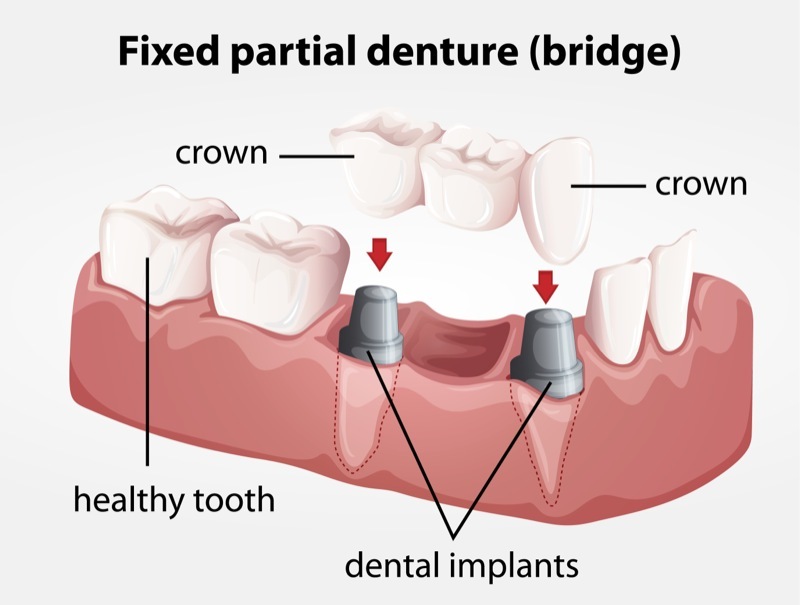Dental Crowns and Bridges: Restoring Your Smile’s Function and Beauty
Introduction
Are you struggling with damaged or missing teeth that affect both the function and beauty of your smile? Dental crowns and bridges can be the perfect solution to restore your smile’s natural appearance and functionality. Whether you have a cracked tooth, a severely decayed tooth, or a gap due to missing teeth, dental crowns and bridges can help you regain your confidence and improve your oral health. In this blog post, we will explore the benefits, procedure, and care for dental crowns and bridges.
What are Dental Crowns?
Dental crowns are custom-made caps that are placed over damaged or decayed teeth to restore their shape, size, strength, and appearance. They are often used when a tooth is severely damaged or weakened and cannot be restored with a filling or other dental treatments.
Types of Dental Crowns
There are several types of dental crowns available, including:
1. Porcelain Crowns
Porcelain crowns are popular due to their natural appearance and ability to blend seamlessly with the surrounding teeth. They are highly durable and resistant to stains, making them a great choice for front teeth restorations.
2. Metal Crowns
Metal crowns, such as gold or silver, are known for their strength and longevity. They are often used for molars or teeth that require extra support due to their ability to withstand biting and chewing forces.
3. Porcelain-fused-to-Metal Crowns
Porcelain-fused-to-metal crowns combine the strength of metal with the natural appearance of porcelain. These crowns are a popular choice for both front and back teeth restorations.
4. All-Ceramic Crowns
All-ceramic crowns are made entirely of ceramic material, providing excellent aesthetics and biocompatibility. They are a great option for patients with metal allergies or those who prefer metal-free restorations.
What are Dental Bridges?
Dental bridges are prosthetic devices used to replace one or more missing teeth. They consist of artificial teeth (pontics) that are anchored to the adjacent natural teeth or dental implants.
Types of Dental Bridges
There are different types of dental bridges available, depending on the specific needs of the patient:
1. Traditional Bridges
Traditional bridges are the most common type of dental bridges. They involve creating a crown for the tooth or implant on either side of the missing tooth, with a pontic in between. These bridges are typically made of porcelain fused to metal or ceramic material.
Summary

Dental crowns and bridges are dental restorations that can effectively address various dental issues, including damaged or missing teeth. A dental crown is a tooth-shaped cap that is placed over a damaged tooth to restore its shape, size, strength, and appearance. It can protect a weak tooth, cover a dental implant, or hold a dental bridge in place. On the other hand, a dental bridge is used to replace one or more missing teeth by anchoring artificial teeth to the adjacent natural teeth or dental implants. Both d Learn More ental crowns and bridges are custom-made to match the color, shape, and size of your natural teeth, ensuring a seamless and natural-looking smile.
- Q: What are dental crowns?
- A: Dental crowns are tooth-shaped caps that are placed over a damaged tooth to restore its shape, size, strength, and improve its appearance.
- Q: How long do dental crowns last?
- A: With proper care and good oral hygiene, dental crowns can last between 5 to 15 years or even longer.
- Q: What are dental bridges?
- A: Dental bridges are prosthetic devices used to replace one or more missing teeth. They consist of artificial teeth (pontics) that are anchored to the adjacent natural teeth or dental implants.
- Q: How long do dental bridges last?
- A: With proper care and regular dental check-ups, dental bridges can last between 10 to 15 years or more.
- Q: Are dental crowns and bridges noticeable?
- A: Dental crowns and bridges are designed to blend in with your natural teeth, making them virtually indistinguishable. They are customized to match the color, shape, and size of your existing teeth.
- Q: How are dental crowns and bridges placed?
- A: The placement of dental crowns and bridges typically requires two dental visits. During the first visit, the tooth is prepared, impressions are taken, and a temporary restoration is placed. In the second visit, the permanent crown or bridge is fitted and cemented into place.
- Q: Are dental crowns and bridges painful?
- A: The process of getting dental crowns and bridges is usually painless as it is performed under local anesthesia. However, some patients may experience mild discomfort or sensitivity after the procedure, which subsides within a few days.
- Q: How should I take care of my dental crowns and bridges?
- A: It is important to maintain good oral hygiene by brushing twice a day, flossing daily, and visiting your dentist regularly for check-ups and cleanings. Avoid biting on hard objects or using your teeth as tools to prevent damage to the crowns or bridges.

Welcome to my website! My name is Spencer Rossi, and I am a dedicated and passionate dental assistant with extensive experience in general dentistry, braces, aligners, cosmetic dentistry, and pediatric dentistry. I am thrilled to have the opportunity to share my knowledge and expertise with you through this platform.


